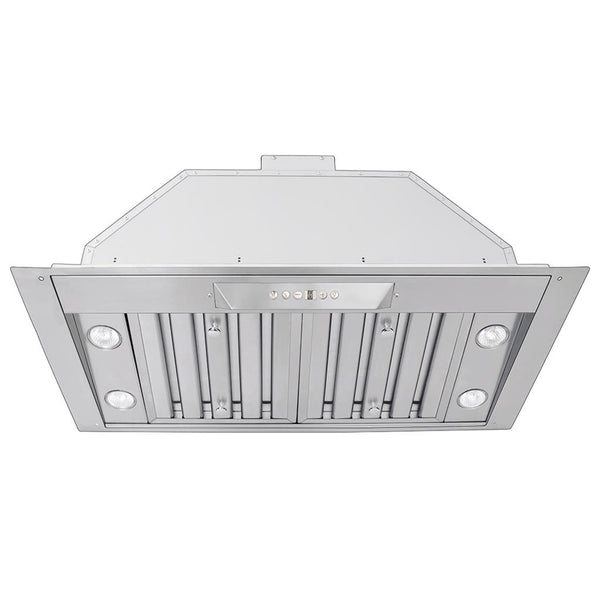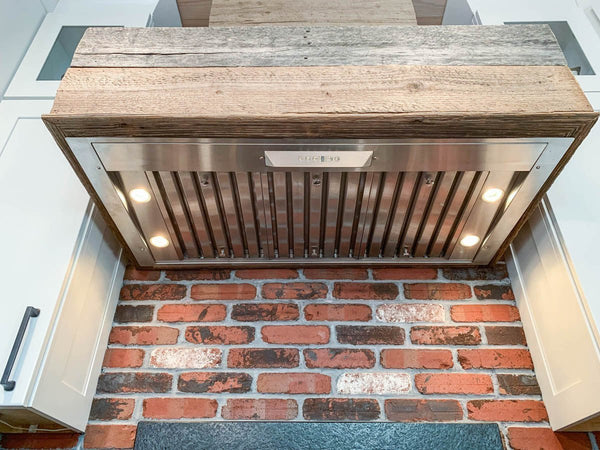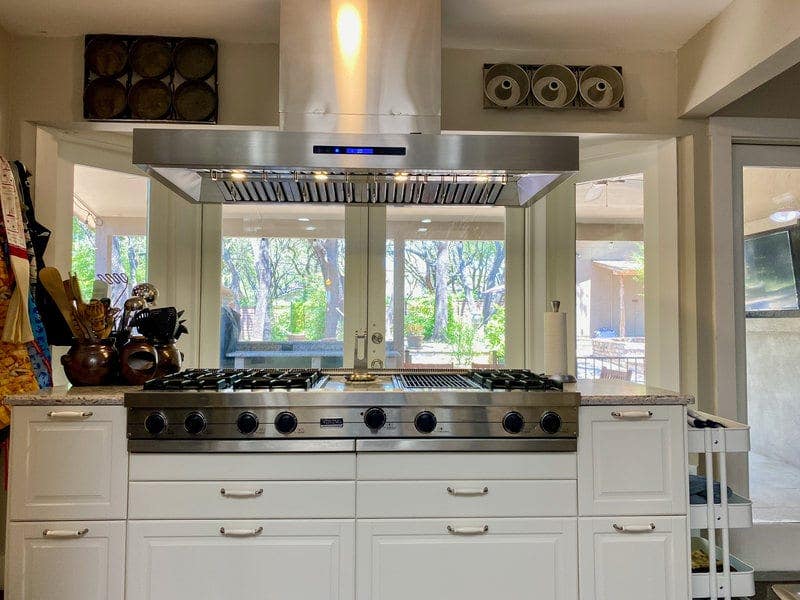A kitchen exhaust fan or hood vent is a great way to maintain great indoor air quality in your home. A good one will remove heavy grease, smoke, and strong cooking odors from your kitchen with ease.
But you might ask yourself: Can you leave a kitchen exhaust fan on? For how long?
You shouldn’t leave your fan on for more than one to two hours while cooking. Most meals in the kitchen should take less than that to prepare. The longer you want to run your hood, the more power you’ll need to vent out all the smoke and cooking fumes.
In short, you should only turn your exhaust fan on while cooking. You can leave it on for up to an additional 15 to 30 minutes after you’re done. Some exhaust fans have an auto-shutoff feature that turns the hood off automatically after three, five, or 10 minutes. This helps clear out any additional smoke, grease, and odors that weren’t captured while you were cooking.
If you cook often or for longer periods of time, make sure you invest in a high CFM range hood with a quality motor. This ensures you will be able to run it at lower speeds which will be easier on the motor over the long run. Otherwise leaving an exhaust fan running for longer periods of time will wear it down quickly!
If you need to use your hood for several hours, we recommend running it at the lowest setting possible. This will help your hood last much longer compared to using it at max speed all the time.
Keep in mind that a higher CFM doesn’t necessarily mean that the motor will last longer. A 600 CFM motor could last longer than a 2000 CFM motor. It depends on your cooking habits, how you use it and the quality of the motor itself. So CFM just measures the strength of the blower, not how long it will last.
It’s important to choose the right fan for your kitchen so it lasts you for years to come. Otherwise you might get into a situation where you need more power from your vent hood. It may not clear out all the smoke and odors, even after you’re done cooking! This means you’ll have to run the fan for longer so it will wear down sooner.
As long as you think about your cooking habits and choose the right CFM for your range hood, you’ll make a great choice!
Tip: Do not leave your LED or Halogen lights on overnight. This will burn the lights out fast!
Kitchen Exhaust Fans Best Practices

Before purchase: Invest in a high CFM fan.
If possible, buy a fan with more CFM than you think you’ll need. Why? Well, it’s much better than the alternative. If you buy a fan without enough CFM, you unfortunately can’t increase it. This means you’ll either have to replace your hood or leave it in your home. But it won’t be able to vent out grease and smoke efficiently.
With a higher CFM fan, you can also use your hood on lower speeds often. This brings us to our next point.
Use your exhaust fan at lower speeds.
Many of our customers use their exhaust fan exclusively at lower speeds. This is great for the range hood, because it keeps the motor from wearing down quickly. The max speed is meant for emergencies or heavy smoke, not for every meal you cook in the kitchen. The less you use the max speed, the longer your hood will last.
Let your hood run for five to 10 minutes after you’re done cooking.
After each meal, let your hood run for a few minutes to clear out any additional smoke, cooking exhaust, and strong odors. If you do a lot of cooking with a wok, frying, or grilling, the extra few minutes of ventilation will make a huge difference!
But if you’re just making a quick lunch, you probably don’t need to leave the hood on. But on some hoods, it’s so easy. Some range hoods have an auto-shutoff feature which keeps your hood on for up to 10 minutes before turning it off automatically. Cool, right?
Many of our hoods from Proline have this feature, too!
Clean your range hood filters about every month or two depending on your cooking style.
Everyone wants to spend money on a range hood once and enjoy it for 10 years, 15 years – or forever! But you need to make sure your hood stays in great condition. One of the best things you can do is keep the filters clean!
Your filters catch all the heavy grease and oils produced from your cooking. The goal is to keep grease buildup low so your dirty kitchen air can move smoothly to the outside.
When should I use an exhaust fan in the kitchen?
Only turn on your exhaust fan while cooking. After you’re done you can let it run for 10 - 15 minutes to clear out the excess smoke. But don’t let it run too long. Otherwise you’ll put a lot of strain on the motor.
Will an exhaust fan reduce heat?
Yes, an exhaust fan reduces heat by removing hot air from your kitchen. In rare cases, if it's hotter outside than in your kitchen, the fan won’t reduce heat. They aren’t like an air conditioner that moves cool air into your home. Cook earlier in the day or turn on your air conditioner to keep your kitchen cool.
For more information, check out our complete article Does an exhaust fan reduce heat?
Which exhaust fan is better, plastic or metal?
Stainless steel exhaust fans are much more durable than plastic exhaust fans. They are much more cost-effective, requiring less repairs down the line. You also have a low risk of needing a replacement, while a plastic hood can wear down in just a few years.
Related Articles
7 Quietest Range Hoods of 2022












